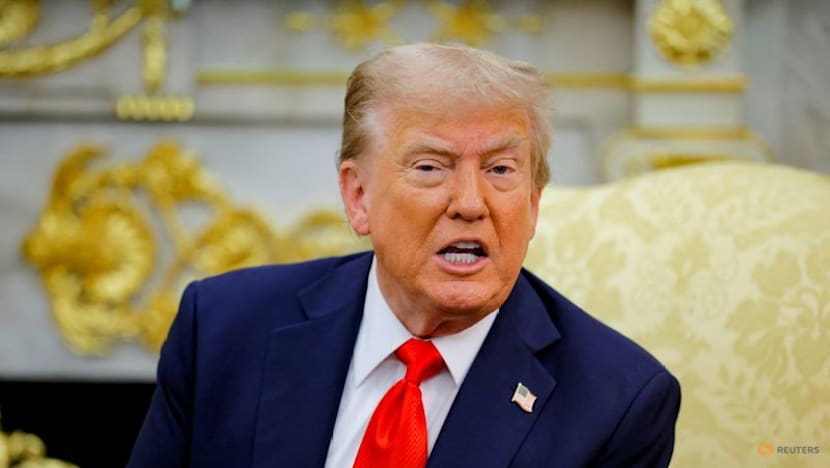Trump signs order to lower US tariffs on Japan autos to 15%
The lower tariffs are set to take effect seven days after publication of the order.

US President Donald Trump at the White House in Washington, DC, US, Sep 3, 2025. (File photo: REUTERS/Brian Snyder)
WASHINGTON: US President Donald Trump signed an order on Thursday (Sep 4) to implement lower tariffs on Japanese automobile imports and other products that were announced in July, providing some relief to Japan's export-heavy economy.
Formalising the deal between the US and a key Asian ally comes after months of negotiations, reduces uncertainty plaguing the massive Japanese auto sector since the July announcement and confirms an agreement for US$550 billion of Japanese investment in US projects.
The lower 15 per cent tariffs on Japanese autos, down from the current 27.5 per cent, are set to take effect seven days after official publication of the order.
The executive order also ensured that the 15 per cent levy on Japanese imports agreed in July would not be stacked on top of those already subject to higher tariffs, such as beef, while items previously subject to tariffs below 15 per cent would be adjusted to 15 per cent. This relief is retroactive to Aug 7.
In addition, it promised no tariffs on commercial airplanes and parts.
Trump's levies on global shipments have dragged down Japan's exports and hit Japanese carmakers hard. Last month, Toyota said it expected a hit of nearly US$10 billion from Trump's tariffs on cars imported into the United States.
"Finally," Ryosei Akazawa, Japan's top trade negotiator, posted to X, in a nod to the months-long trade talks that had frustrated lawmakers in Tokyo. Thursday marked his 10th trip to the US for the negotiations.
Speaking to reporters in Washington, Akazawa said Japan welcomed the executive order as "a steady implementation of the agreement reached on Jul 22".
Rival exporter South Korea is still waiting on an executive order covering a similar trade agreement with the US, including a 15 per cent tariff on US imports from automakers like Hyundai Motor and Kia, down from 25 per cent.
A South Korean trade official said on Friday that his country was assessing the potential impact of the executive order regarding Japan.
Shares of major Japanese automakers were up slightly on Friday in early trading, while those in South Korea were slightly lower.
Toyota praised Trump's efforts to reach a trade deal with Japan. "While nearly 80 per cent of the vehicles Toyota sells in the US are made in North America, this framework provides much-needed clarity," the company said in a statement.
Trump's order said Japan was "working toward an expedited implementation of a 75 per cent increase of United States rice procurements... and purchases of United States agricultural goods, including corn, soybeans, fertiliser, bioethanol (including for sustainable aviation fuel)" and other US products totalling US$8 billion per year.
As part of the deal, Japan will buy 100 Boeing planes and hike defence spending with US firms to US$17 billion annually, from US$14 billion, the White House said in July.
Japan said in July that the share of US rice imports may increase under its existing framework but that the agreement did "not sacrifice" Japanese agriculture.
US$550 BILLION OF INVESTMENTS
Trump's order on Thursday also reiterated that the Japanese government has agreed to invest US$550 billion in the United States in projects that will be selected by the US government.
Two-way trade between the two countries reached nearly US$230 billion in 2024, with Japan running a trade surplus of nearly US$70 billion.
The United States in July, agreed to lower tariffs on imports of Japanese automobiles, but the timing remained unclear as Trump had yet to sign an executive order.
Japan has said the trade deal ensures the US' fifth-largest trading partner will always receive the lowest tariff rate on chips and pharmaceuticals of all the pacts negotiated by Washington, but the latest order had no mention of the treatment.
Japan will continue to push the US to ensure the agreed treatment, Akazawa told reporters.
The US$550 billion investment package, which will come in the form of equity, loans and guarantees from Japan's government-owned banks, was agreed as part of the July trade deal.
The two governments also signed a memorandum of understanding on the details of the investment package on Thursday.
The executive order said that the United States "may modify this order as necessary" should Japan fail to implement its commitments under the agreement.
The agreement comes ahead of a key test for Japan's embattled Prime Minister Shigeru Ishiba, with his ruling party set to vote on Monday on whether to hold an extraordinary leadership election that could result in his ouster.
Ishiba has overseen his ruling coalition lose its majority in elections for both houses of parliament since coming to power last year amid voter anger over rising living costs and weak economic growth exacerbated by the trade tariff uncertainty.
While finalising the trade deal gives Ishiba an argument to stay on, he is unlikely to survive the backlash from within his own party, said David Boling of political risk consultancy EurAsia Group, estimating a 60 per cent chance that he is forced out.















